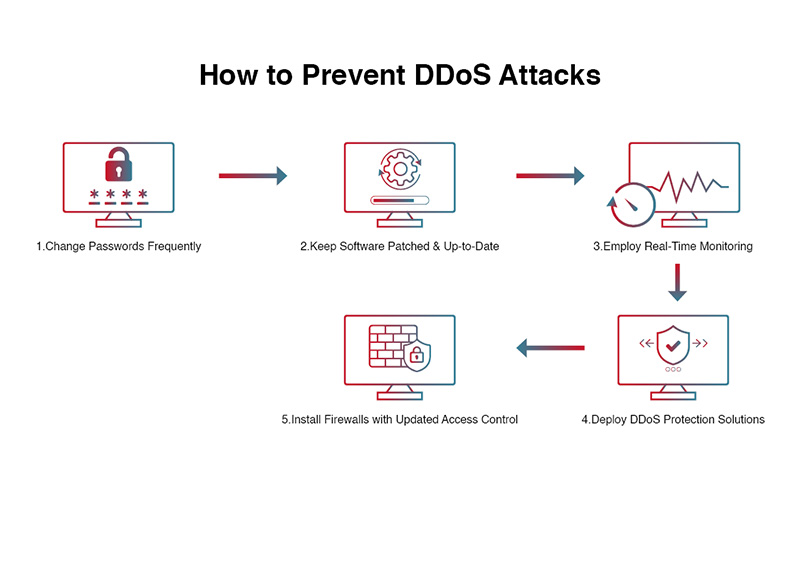How to Prevent DDoS Attacks
DDoS attacks, short for Distributed Denial of Service attacks, are a type of cyber attack where multiple compromised systems are used to target a single system, causing a denial of service for users of the targeted system. These attacks can wreak havoc on websites, causing downtime, loss of revenue, and damage to a company’s reputation. It’s essential for businesses to take proactive measures to prevent DDoS attacks before they happen. In this article, we will discuss some effective strategies for preventing DDoS attacks and safeguarding your online presence.
1. Implement DDoS Protection Services
One of the most effective ways to prevent DDoS attacks is to invest in DDoS protection services. These services work by monitoring incoming traffic and filtering out malicious traffic before it reaches your website. DDoS protection services can help mitigate the impact of an attack and keep your website up and running, even during an attack. There are many DDoS protection services available on the market, so be sure to choose one that meets your specific needs and budget.
2. Configure Firewalls
Firewalls act as a barrier between your website and potential attackers, filtering out malicious traffic and preventing unauthorized access. By configuring your firewall settings to block suspicious traffic and only allow legitimate traffic to pass through, you can significantly reduce the risk of a DDoS attack. Make sure to regularly update your firewall software and keep an eye on any unusual activity that may indicate an attack.
3. Use Load Balancers
Load balancers distribute incoming traffic evenly across multiple servers, reducing the likelihood of a single server becoming overwhelmed during a DDoS attack. By spreading the workload across multiple servers, load balancers can help maintain the performance and availability of your website even under heavy traffic loads. Implementing load balancers is a proactive measure that can help mitigate the impact of a DDoS attack before it escalates.
4. Monitor Network Traffic
Regularly monitoring your network traffic can help you detect and respond to DDoS attacks in real-time. By analyzing traffic patterns and looking for spikes in traffic volume, you can identify and mitigate an attack before it causes significant damage. Invest in network monitoring tools that provide real-time alerts and analytics to stay one step ahead of potential attackers.
5. Educate Your Team
Training your team on cybersecurity best practices can help prevent DDoS attacks and other cyber threats. Make sure your employees are aware of the risks associated with DDoS attacks and understand how to recognize and respond to suspicious activity. By educating your team on security protocols and procedures, you can create a culture of vigilance that can help protect your organization from cyber threats.
Conclusion
DDoS attacks are a serious threat to businesses of all sizes, but with the right precautions in place, you can significantly reduce the risk of an attack and keep your website safe. By investing in DDoS protection services, configuring firewalls, using load balancers, monitoring network traffic, and educating your team, you can safeguard your online presence and minimize the impact of a DDoS attack. Stay proactive and stay informed to protect your business from cyber threats.
